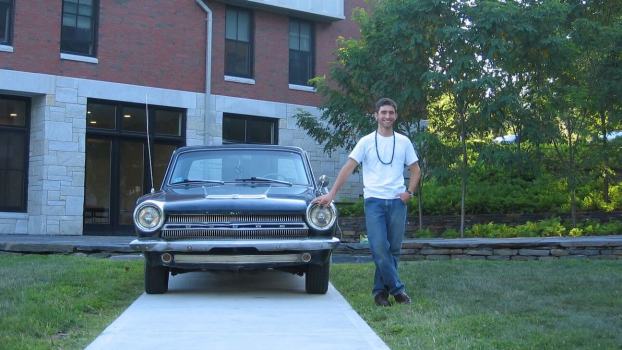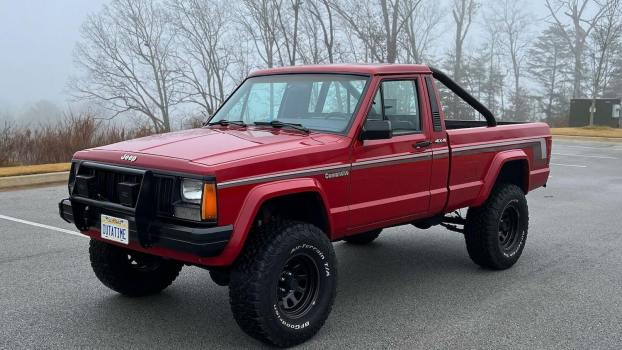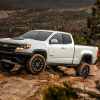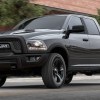
Can You Salvage a Project Truck With a Rusty Frame?
If you live in the rust belt of the U.S. or Canada, you know oxidation destroys otherwise perfect vehicles. I bought my 1988 Ford F-150 truck in Washington, DC, hoping to avoid rust issues. But as I dug into its restoration, I nearly abandoned the entire pickup truck project over frame rust. Check out my first article on fixing up the old truck, or read on to find out how I repaired the rust issues.
Rust strikes the 1988 F-150 truck’s frame
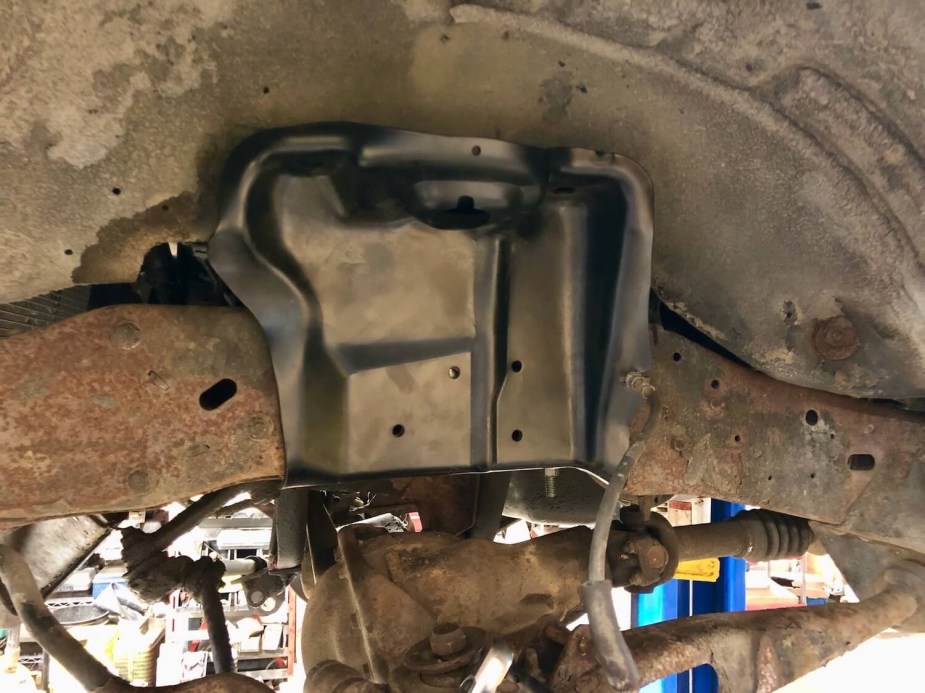
My 1988 Ford F-150 has coil spring front suspension. These coils are sandwiched between the front axles and bucket-sized brackets attached to the top of the frame (pictured).
As I began disassembling my front suspension, I found the brackets holding the springs were covered in rust. Where the driver’s side spring pressed against the bracket, the metal was millimeters from wearing all the way through. I was one rapid emergency stop away from putting a wheel through my fender!
Worse yet, when I removed the rusty brackets, I found two of the four bolt holes holding them to the truck’s frame had broken wide open with rust. I didn’t have enough frame remaining to hold my new suspension in place.
When I asked my mechanic, Brad Giroux, if he would abandon the truck, he said he knows one other mechanic who can always save a vehicle, even that far gone: John Cesari. John Cesari is my father.
My mechanical family
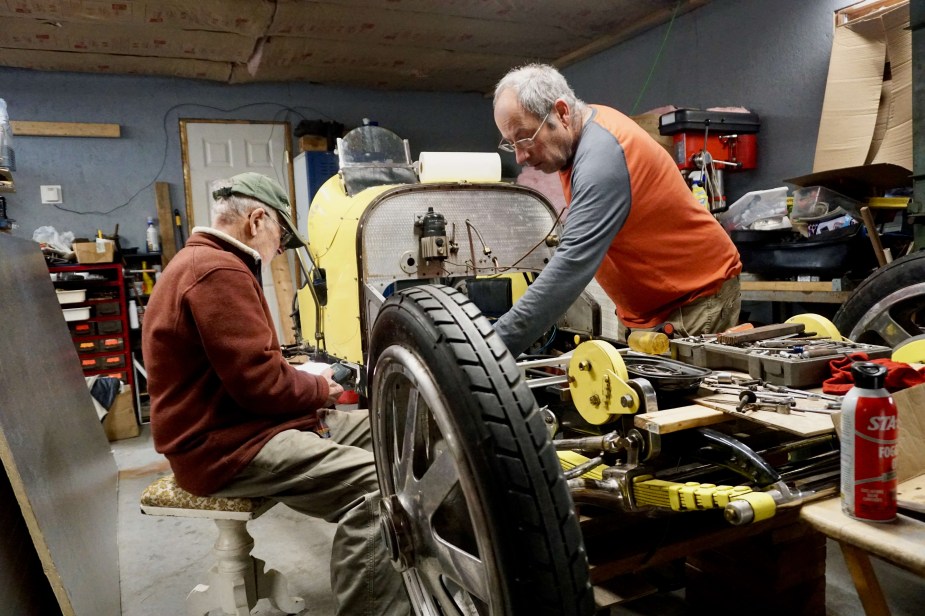
I’ve put in my time, wrenching on everything from 1960s muscle cars to Japanese motorcycles. I’ve also been an automotive journalist for years now. Even so, I’m far from the most mechanically-minded person in my family.
My dad is such a mechanical savant that he earns his living working on antique Bugattis and other “prewar” cars worth millions of dollars. His competitors have told me he knows how to do things that perhaps half a dozen other human beings alive today are capable of. And in his line of work, no priceless frame is beyond saving.
He also runs a nonprofit restoring lighthouses in Maine, which sometimes involves driving 4WD equipment across the ocean bottom at low tide to access remote islands. This only affects our story in that his summers are jam-packed. But when I explained my F-150 woes, he offered to clear one day and see if we could save the truck. But we would only have a few hours to engineer and execute a fix.
Stronger than stock

My dad walked around the F-150 truck, pointed at the weak spots on the rusty frame, and asked me one question: “Where do we need to add strength?”
The question made me forget about concerns such as what the frame looked like when the truck was new and examine the problem from a different angle. I said, “The shock absorbers and springs push up on the L-shaped bracket so they will try to buckle inwards toward the engine. We need to secure the bottom and make sure it can’t flex top-to-bottom.”
I’d overnighted brand-new brackets, compliments of Amazon parts. So we agreed to cut a pair of panels to weld to the back of the rusty truck’s frame. Then we drilled through and bolted the brackets to both the frame and the panels. When Brad came in, he declared our over-engineered fix “stronger than stock.”
The seeming disaster taught me two more things. First of all, though modern unibody pickup trucks and SUVs are nearly as capable as their body-on-frame counterparts, full-frame vehicles will always have one advantage. If the rust behind the spring brackets of my F-150 spreads to the rest of the frame, I can always swap the entire frame out for a new one. This procedure would cost more than I originally paid for the truck, and I might not decide it’s worth the trouble. But at least it is an option.
The second lesson is experiencing the Achilles heel of coil spring suspension firsthand. Traditional leaf spring suspension bridges the pressure on the frame across a long section of the frame. But coil springs have a single contact point, which is prone to wearing out and failing. Ram and Toyota are building brand-new pickup trucks with coils springs at all four corners. These trucks offer towing and hauling capabilities equivalent to their peers with rear leaf springs. They also boast a much smoother ride and slightly better handling. But drivers in salty northern parts of the country, prone to vehicles rusting out, should consider how these trucks will wear over time. If you’re concerned, check out one owner’s review of his 200k mile fifth-gen Ram.
Want to know more about my 1988 F-150 restoration? Follow the project on my Twitter, or find out why some classic vehicle fans love outdated project cars.
